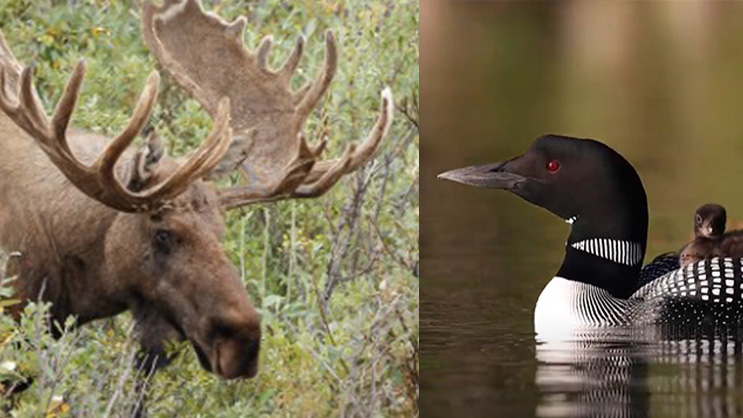By PAULA TRACY, InDepthNH.org
CONCORD – If there is to be a bit of competition between the moose and the loons in this state on license plates, Fish and Game wants a piece of the action.
Stephanie Simek, director for the NH Fish and Game Department, told the Senate Finance Committee that the department cannot support a proposed loon license plate because it might lead to reduced revenue from the Moose conservation license plate which benefits the department, in part, and that the new fund would not go to wildlife conservation but to fight a nasty and potentially dangerous scum on the lakes, cyanobacteria.
While there is a bill that passed the House to support the new plate, it has also been tucked into the budget trailer bill, item number 95 in HB 2. It is to include the “Love NH Lakes” number plate which is part of House Bill 105-FN, but one senator wants it taken out of the budget bill.
The moose plate has been a great success for the past few decades.
Vehicle owners purchase the iconic license plate for $8 and $30 annually with the funds going to five state agencies including Fish and Game. A list of grants that have benefited from the Moose plate are listed here https://www.mooseplate.com/projects/.
“The concern with Fish and Game is that we have seen this in other states and we are concerned that it might reduce the revenue for the Moose plate overall. Many times when states usually introduce another icon plate it does affect the other conservation plate. And in this case in particular the goal was to use the state threatened loon as the icon yet none of the funding is going to be earmarked for conservation of that species or conservation of any wildlife species. It is for cyanobacteria,” Simek said.
She noted that she understands it takes a lot of money to fight cyanobacteria, a blue green colored algae that has health impacts for swimmers, pets and livestock.
Last year was a particularly difficult year for the state with many cyanobacteria blooms breaking out and many postings warning people to stay out of the water.
The funding from the new loon plate would be going to the Department of Environmental Services which is not among the five agencies now receiving Moose plate revenues. They would dole out grants to lake groups to fund comprehensive studies to help lakes stay clean
The agencies which do receive Moose plate funds are Transportation, Natural and Cultural Resources, the Land and Community Heritage Investment Program and the State Conservation Commission.
“As a leader of this agency I look at it at an ecosystem level and I think the way you prevent cyanobacteria outbreaks is by having good healthy ecosystems and using good fish habitat and maintaining healthy water quality and things like that…So I would suggest that you might consider looking at that and whether or not there is an opportunity for us to receive some funding to help support the effort. But nevertheless, we are concerned that this is going to take some funding away from the Moose Plate,” Simek told senators.
Sen. David Watters, D-Dover said he hoped that the Senate would take this item out of the budget and amend it under the House Bill 105 process.
The bill passed overwhelmingly in the House and is now in the Senate Transportation Committee.
“The plates shall prominently display a loon on a lake,” the bill reads. “The plates shall retain the ‘live free or die’ logo. Such plates shall be issued only upon application and upon payment of a $30 fee that shall be in addition to the regular motor vehicle registration fee and any other number plate fees otherwise required.”
“The cyanobacteria mitigation loan and grant fund shall be used to fund loans, grants, and reimbursements in accordance with this subdivision,” the bill reads.
There is no estimate in the bill on how much could annually be generated for the new fund, which would go into effect 60 days after passage.





